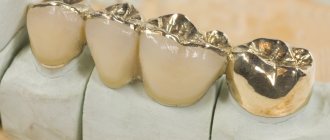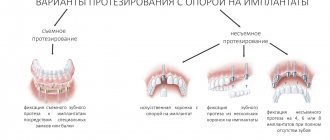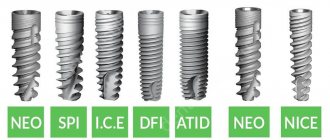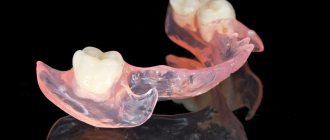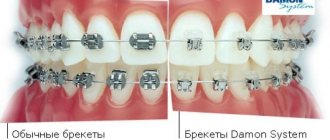Quite a strange question from a clinic that provides dental implantation services. But our task is not to install as many implants as possible, but to solve the problem with which you come to us, prepare you and honestly tell you about all the nuances, including the unpleasant ones.
So, there is an empty space in the dentition. Are you sure that implantation is what you need? And no wonder: in transport, newspapers, and on the Internet there are full of advertisements about the advanced method - dental implantation. Painless, long lasting, “set it and forget it”
,
“the tooth is like a native one”
and so on. Is it so?
Yes, yes. Nothing better has yet been invented in world dentistry. As a result, you will get a fixed tooth that will serve you without creating a load on the neighboring ones, which you will stop thinking about, just as you don’t constantly think about the rest of your teeth. But advertising remains advertising. They show you the end result - a beautiful smile, happy eyes, a healthy appearance. What will you have to go through to get the picture you want?
Let's ask patients who have already installed implants:
Nikolay, the operation took place in 2010: “What will you have to go through? Frankly speaking, a couple of circles of hell. Once you decide to get an implant, forget about long trips for a year - you will be tied to the clinic and the doctor who monitors the implant healing process. But I’ll be honest – the result is worth it...”
Preparation
First - stop smoking! Even if the implant takes root, it will not last long - for a smoker, if he does not want to give up his habit, it is better to forget about implantation - do not torture yourself in vain!
Second, you need to have time and patience. The implant takes root in different ways: for some it takes 2-3 months, for others it takes six months or more.
Zhanna, the operation took place in 2011:
“If you are a woman and are planning a child, choose one thing: dental implantation or pregnancy.
It is very difficult to combine both without harming yourself or your unborn child. The doctor forbade me to breastfeed after the operation...” Get ready to donate blood and have a CT scan of your jaw. Ideally, you should come to a consultation with an implantologist with a disk on which your 3D image is recorded - this will speed up the decision-making process and bring the surgery time closer.
Implantologists
Most importantly, make sure that the implantologist is not a visiting specialist, but is part of the clinic’s staff. If a doctor is here today and there tomorrow, it will be difficult for you to get an appointment, and simply track his movements from clinic to clinic. In addition, visiting consultants are little concerned about the prestige of the dental center; they do not have close connections with doctors from other departments and technicians.
Education also plays a role. Not only the basic ones received many years ago, but constantly updated. Is the doctor certified to work with a specific brand? How long has it been since she took courses and attended trainings? Implantology is akin to programming - you get distracted for a while and that’s it, you can’t catch up. Simply placing a dental implant is not enough these days; you need to use current techniques with a high percentage of engraftment.
Surgery and postoperative period
The process itself will be painless and short-lived - you will be given good local anesthesia and the implant will be quickly installed. But even here there is a pitfall: you may need an operation called a sinus lift.
— implantation of artificial bone if yours has atrophied. The procedure is short but expensive. It is usually carried out during implantation in the area of the upper front teeth.
Gennady, the operation took place in 2011:
“Immediately after the operation they will not let you go home - they will give you ice and force you to hold it against your cheek for 20-30 minutes.
Be prepared to take antibiotics. To prevent infection, the doctor will prescribe you a whole course. Talk to your gastroenterologist about restorative therapy in advance. In any case, I simply needed a gastroenterologist for my pancreas.” Elena, the operation took place in 2012:
“Don’t wait until the anesthesia starts to wear off—take a painkiller.
Otherwise, you will have to experience severe pain that will not go away within 2-3 days. During this time, take any pain medication your doctor prescribes or that usually works for you. Don’t torture yourself - your pain is not needed by anyone, and, above all, by yourself. I had to take a long sick leave to come to my senses...” Temperature, weakness, swelling, numbness, inflammation are your possible companions. The best thing you can do for your body after surgery is to establish bed rest, at least for 1-2 days, and preferably for 3-5. Do not go to crowded places, do not play sports or lift heavy objects, do not sunbathe.
In the first week, establish a diet - exclude salty, spicy, sour, and hard foods. Forget about alcohol!
The next day, a week, a month later - control x-rays to monitor the process of implant healing and the absence of complications. Here you can expect: suture dehiscence, reimplantitis (inflammation of the bone tissue around the implant), implant rejection. Then the process will last for several more weeks - in the worst case, the implant will have to be reinstalled. Be prepared for this situation as well.
Anna, both operations took place in 2013:
“Honestly, there were several moments when I wanted to give up everything.
It seemed to me that doctors were playing it safe, and without any reason. I was afraid to go to the appointment and take a picture, because I didn’t want to hear the phrase “Come back in 2 weeks, it’s too early.” I had the implant installed again, and I was ready to give up my idea. But I was well supported by my husband, parents, nurses and the doctor himself - and when, finally, everything was left behind, I was happy. Previously, it seemed to me that I would never dare to do this again, but now, after 2 years, I am beginning to understand that nothing could be better than an implant...” Follow all the doctor’s recommendations, then the risk will be minimal. Do not hesitate to arrive before your appointment, or call the clinic if your condition worries you.
Approximate costs at this stage:
- Operation to install an implant (possibly repeated) – from 25 thousand rubles
- Sinus lifting (possibly) – from 20 thousand rubles
- Control x-rays – from 1000 rubles, depending on the required quantity.
- Necessary medications – from 2 thousand rubles
Peculiarities
Implants are made from grade 4 and 5 titanium. VTK dental implants are processed using the company’s unique technology - Double Acid Etched Surface. The surface with microscopic roughness is quickly overgrown with bone tissue, which contributes to excellent initial stabilization of the implants.
Abutments with connections in the form of an internal or external hexagon with or without a Morse taper allow you to fix any orthopedic structure at an optimal angle - from a single crown to a complete denture. The precision and tightness of the connection prevent even minimal movement of the structure and the spread of bacteria at the interface between the implant and the abutment.
Installation of the healing abutment
When the doctor is sure that the implant has taken root, he will install a gum former for you. The name speaks for itself: the former is needed to prepare the gums for future prosthetics: installation of an abutment and crown.
Oleg, the operation took place in 2013:
“You know, after the operation and recovery, installing the shaper is just kindergarten, easy. It felt like a filling had been placed, at least in terms of time it was approximately like that. I spent 2 weeks with the former, and then they took impressions and put a crown on me within a month. Beauty!"
Approximate costs at this stage:
- Installation of a gum former: 5 thousand rubles
- X-rays (possibly) from 300 to 1200 rubles
Quality control
The company carefully controls the quality of its products. Barcoding has been introduced into production; the entire process of manufacturing products is automated and takes place on the latest high-precision equipment. Quality is monitored by a specially developed computer system Manny (“Manny”). All BTK implants are accompanied by documentation confirming compliance with European quality standards ISO 9001 and ISO 13485. Moreover, you can trace the history of each product from manufacturing to installation. After implantation, the patient is given a special implant passport, which contains all the information about it.
Prosthetics on an implant
If everything else went well before this stage, then installing the abutment and the crown on top takes from a week to a month. Prosthetics on an implant is similar to conventional prosthetics, only the support is not your own tooth root, but a titanium one.
Irina, the operation took place in 2014
“Prosthetics began at the peak of my nerves. I am a suspicious person, and it seemed to me that they were deliberately dragging out deadlines for me (of course, nothing like that happened, but I later realized this), they were not telling me something. I was hysterical, cursing - it’s a shame to remember. Now, taking this opportunity, I would like to thank the doctors and other staff for their patience and care. And give advice to patients: be patient, and everything will work out! The prosthetics ended unexpectedly quickly (and I was determined to walk for a long time). One fine day I smiled in the mirror and burst into tears of happiness right in the doctor’s chair...”
Approximate costs at this stage:
- Temporary abutment (possibly) – 1850 rubles
- Temporary crown (possibly) – 1050 rubles
- Abutment: from 5 thousand rubles
- Crown: 18 thousand rubles
- Casts, models, fixation: from 2 to 3 thousand rubles
Myth 4. “Implantation is done under general anesthesia, causing harm to the heart”
In most cases, there are no indications for general anesthesia, and patients are implanted under local anesthesia. At the same time, they are conscious, observe and partially control the situation, and respond to the doctor’s requests.
The myth about the dangers of general anesthesia for the heart has been entrenched in the mind since the times of Soviet medicine, when potent and harmful drugs were used for anesthesia. Pharmacology has made great strides forward, anesthesia has become effective and less dangerous. Although it puts a short-term and harmless load on the kidneys and liver.
Igor Bondarev, St. Petersburg
“The global nature of my dental problems is largely explained by the fact that I tried to avoid dentists all my life. Naturally, when there are 9 diseased teeth left in the oral cavity, and not a single healthy one, it’s time to reconsider the situation. I mentally understood that I needed to do implantation, but at the same time, the fear of any medical manipulations held me back. Having assessed the scale of the disaster, the doctor offered me general anesthesia. And so they did. The operation lasted more than an hour and a half - at the bottom they installed a common bridge on implants, but at the top they installed 4 separate classic ones, in general - they tinkered with me. I’m glad I wasn’t “present” at this!”
Implant aftercare
You are happy about your new teeth, but do you remember the first conversation with the doctor, even before the whole procedure began? He told you about mandatory oral hygiene, using special means:
- Toothbrush: at least 2 times a day and after every meal. Brush your teeth using massaging movements, alternating circular and sweeping movements.
- Dental floss (floss, superfloss). The spaces between teeth must be cleaned, otherwise plaque that is harmful to implants will accumulate there.
- Irrigator. Be sure to purchase it, because the irrigator is the savior and friend of your implants. A needle-thin stream of water will clean plaque from the area where the crown adheres to the gum, get rid of the unpleasant odor and prevent the destruction of the crown.
- Professional hygiene. Now you are a regular client of the dental hygienist. Once every six months you definitely (required!!!) need to do professional hygienic cleaning: ultrasonic plaque removal and AirFlow treatment
Alena and Konstantin, operations took place in 2015:
“We placed implants together, supported each other. Everything went well, and we understood that now we are more responsible for our teeth than before. After all, once we didn’t save them - we lost them, so now, having spent so much money and effort on implantation, I would like to observe the result for as long as possible. In general, a lot depends on the person himself: whether he smokes, whether he drinks often, whether he cares about his health... Previously, brushing your teeth took 2-3 minutes, now it takes 10-15, because you need to go through everything with an irrigator and floss..."
Italian implants
Leader implants
C-Tech implants
BTK implants
Three decades ago, there were only a few implant manufacturers, and the procedure itself was mainly performed in European countries. Now the number of brands has increased significantly, so many patients begin to get confused when choosing a particular implant. Models of different brands have their own design features, which are sometimes very significant and fundamental.
In this article we will look at the features of Italian implants. Let us clarify right away: the network of clinics “STOMPRACTICA.RF” does not work with implants from Italy.

